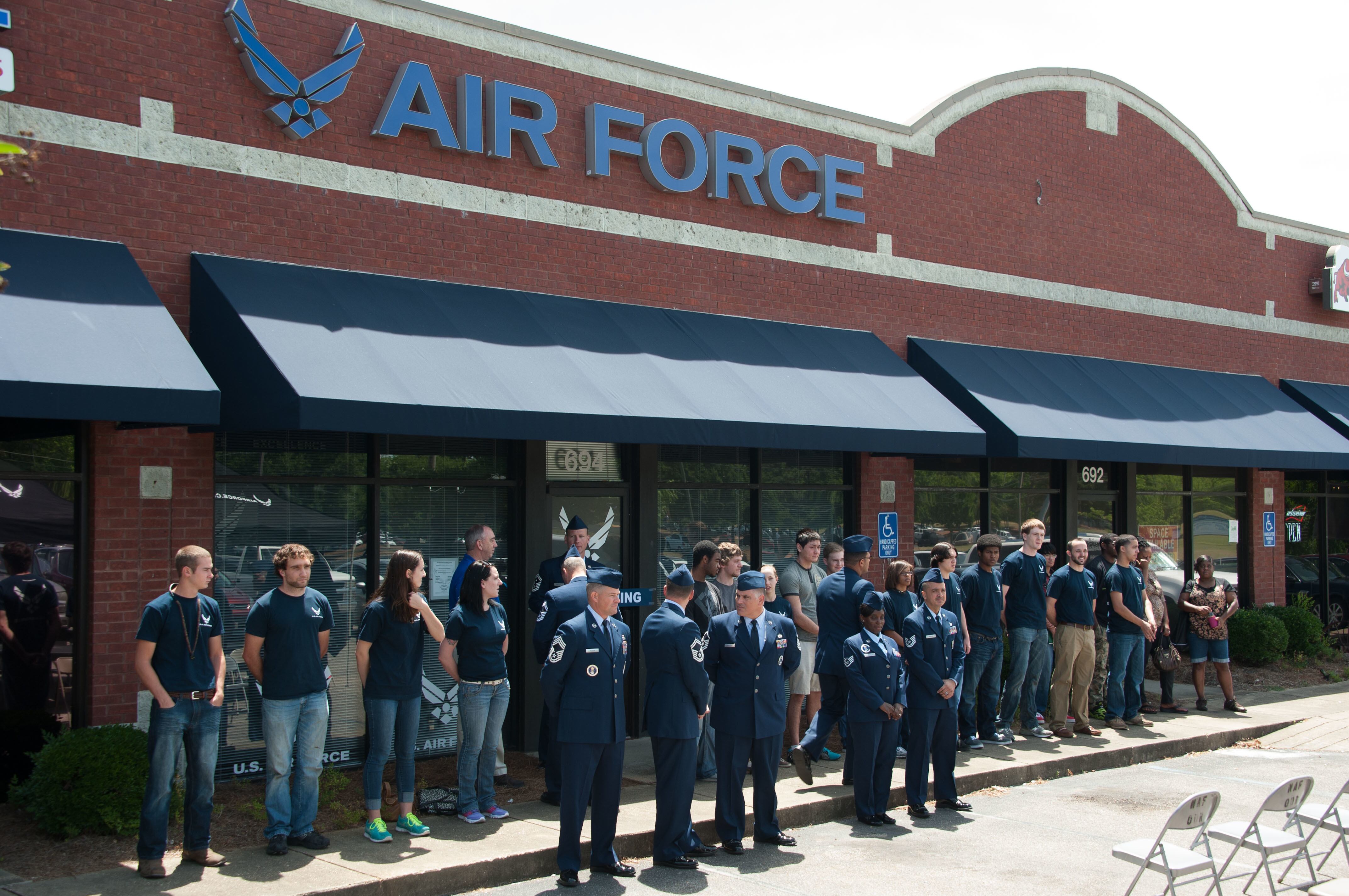Nearly a year after the terror attack shootings in Chattanooga that left killed five service members dead in Chattanooga, Tennessee, the top Pentagon officials remains unsure whether allowing giving more guns to recruiters and other vulnerable military personnel to carry guns is would be a viable and effective way to improve security at recruiting stations and other remote off-base military work sites.
The military faces has faced mounting pressure to arm more troops after the July 16 shootings by carried out by a Kuwaiti-born American whom investigators say was a "lone wolf" inspired by Islamic extremists’ propaganda. Mohammad Abdulazeez opened fire on a storefront recruiting center then drove to a nearby Navy reserve facility, where he killed four Marines and a sailor. The commanding officer of that facility fired his personal handgun at the assailant, which elicited praise from many troops, lawmakers and gun-rights advocates but briefly raised questions as to whether he'd face disciplinary action for violating regulations.
In response to the Chattanooga shootings, Defense Secretary Ash Carter announced last October his plan to arm "appropriately qualified individuals at select off-installation facilities" that require greater protection. Yet to date top military officials won’t say how many — if any — additional troops have been authorized to carry guns while on duty. And so far the Pentagon has offered no new policies to clarifying how and when a commanders can approve authorize recruiters and other at-risk troops to do so. The issue takes on even greater complexity when discussion turns to or other military personnel to carry a weapon, especially a concealed weapons, at an off-base location that might be at heightened risk for an attack.
After months of consideration from high-level military officials, the issue has proven to be uniquely complex. Military officials worry that more weapons or more armed guards could jeopardize their underlying goal of ensuring recruiting stations are approachable and attractive places for prospective recruits. "We have to create that balance," said Charles Kosak, the deputy assistant secretary of defense for defense continuity and mission assurance, told Military Times during an interview Friday. "The mission is really to be accessible. If you try to create a situation where you have armed guards standing all around a facility ... that kind of an approach would negate in many ways the very purpose for a recruiting center, which is to have an inviting environment in which a young person with his parents … can come in," Kosak said an interview Friday.
"We are creating policy that creates clarity for commanders to make balanced decisions," he said.
Another complicating factor is the patchwork of state and local gun laws. Many recruiting stations are on leased property, giving the landlords some say over the question of guns on the premises.
"There are so many variables," Kosak said. "... These facilities are physically different ... the staffing at those facilities is very different and potentially, for example, the remoteness of a facility as it pertains to first-responders’ capacity," Kosak said."
Kosak cautioned that giving more guns to recruiters or others may not improve safety. "You could unleash unintended consequences. You could come into situations where you're not adding value," he said.
Kosak said the Pentagon is in the final phase of "clarifying the policy." He declined to say whether the end result will ultimately give commanders wider discretion to arm recruiters and other off-base personnel.
"It probably sounds whishy-washy," said one defense official familiar with the discussions. "But the thing that an outsider doesn't understand is that there is so much confusion in the [current] policy about what is allowed and what is not allowed, because it wasn't clarified. So by clarifying it, it really does clear up and explain what options commanders may already have but they just don't understand."
The Pentagon's indecision has frustrated Congress. On Wednesday, House lawmakers threatened to withhold funding if the Defense Department doesn't finalize its firearms policy by the end of this year. The threat was proposed by Rep. Duncan Hunter, R-Calif., who called it a matter of basic safety and fairness for troops looking to exercise their Second Amendment rights.
Kosak said the new policy will probably be unveiled "within a few months."
While the issue of arming more personnel remains unresolved, the Pentagon is pushing ahead on several other safety measures for recruiters and others at off-base work sites. For example, the Defense Department has established set new force-wide standards for physical security enhancements at recruiting stations and set aside $80 million this year to begin installing those measures. They which include:
• New entry-control points, like swipe-card readers
• Peep holes for back doors
• Window blinds that obscure visibility for passersby
• "Internal ballistic protection" that would give people something to hide behind in the event of an armed attack.
Installing those enhancements is underway at some recruiting stations, Kosak said.
Another measure that military officials have agreed to involves new mass-notification procedures. An agreement with state-level officials will require 911 emergency service operators to notify U.S. Northern Command about any major incidents reported at remote off-base military work sites, Kosak said.
In turn, NORTHCOM would, in turn, notify nearby installations and work sites to ensure rapid responses to attacks like the one in Chattanooga.

The Air Force's 331st Recruiting Squadron opened this new recruiting facility in Prattville, Ala., in May 2015.
Photo Credit: Bud Hancock/Air Force
On July 16, Muhammad Youssef Abdulazeez opened fire on a Chattanooga recruiting center then immediately drove to a nearby reserve facility, the Navy Operational Support Center in Chattanooga, where he killed four Marines and a sailor.
Andrew Tilghman is the executive editor for Military Times. He is a former Military Times Pentagon reporter and served as a Middle East correspondent for the Stars and Stripes. Before covering the military, he worked as a reporter for the Houston Chronicle in Texas, the Albany Times Union in New York and The Associated Press in Milwaukee.





